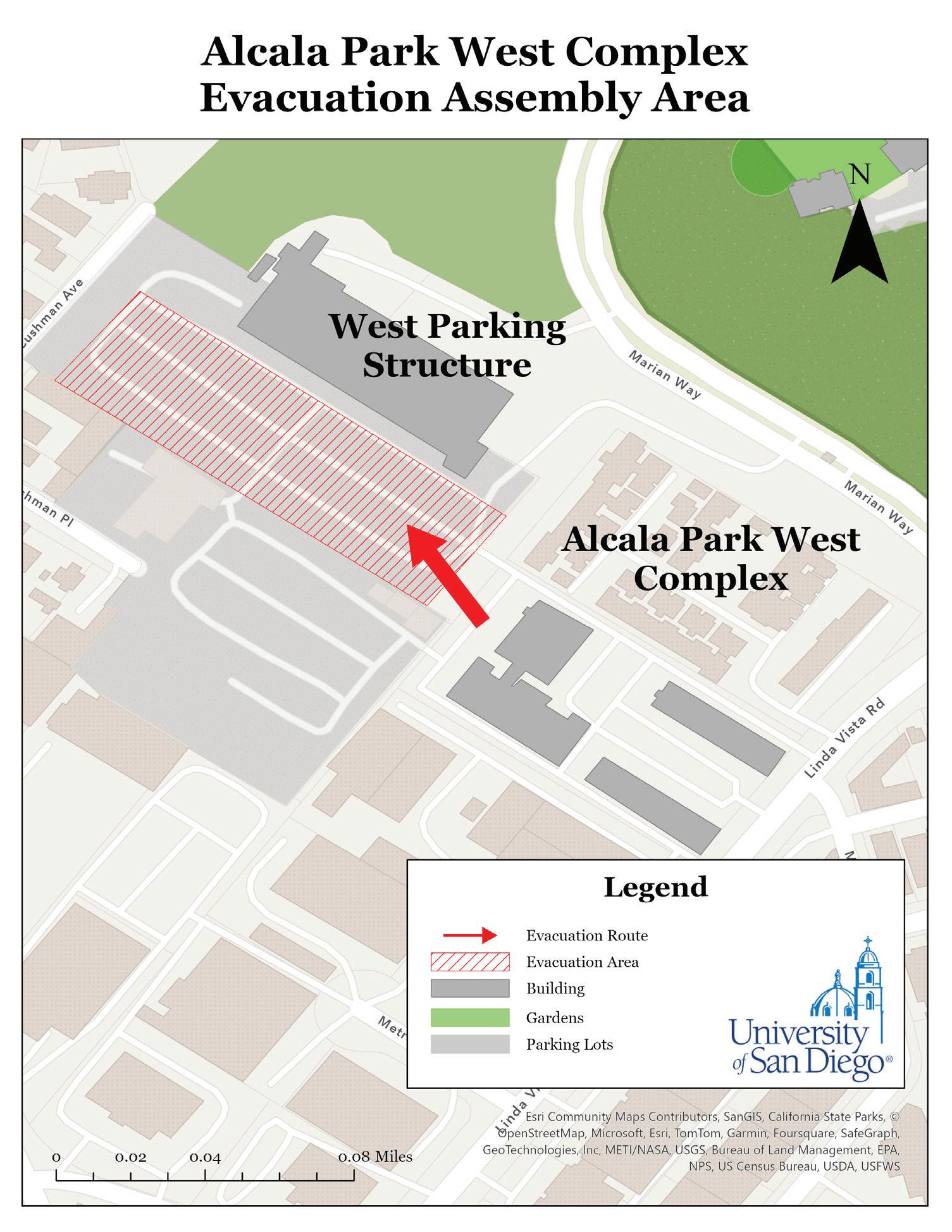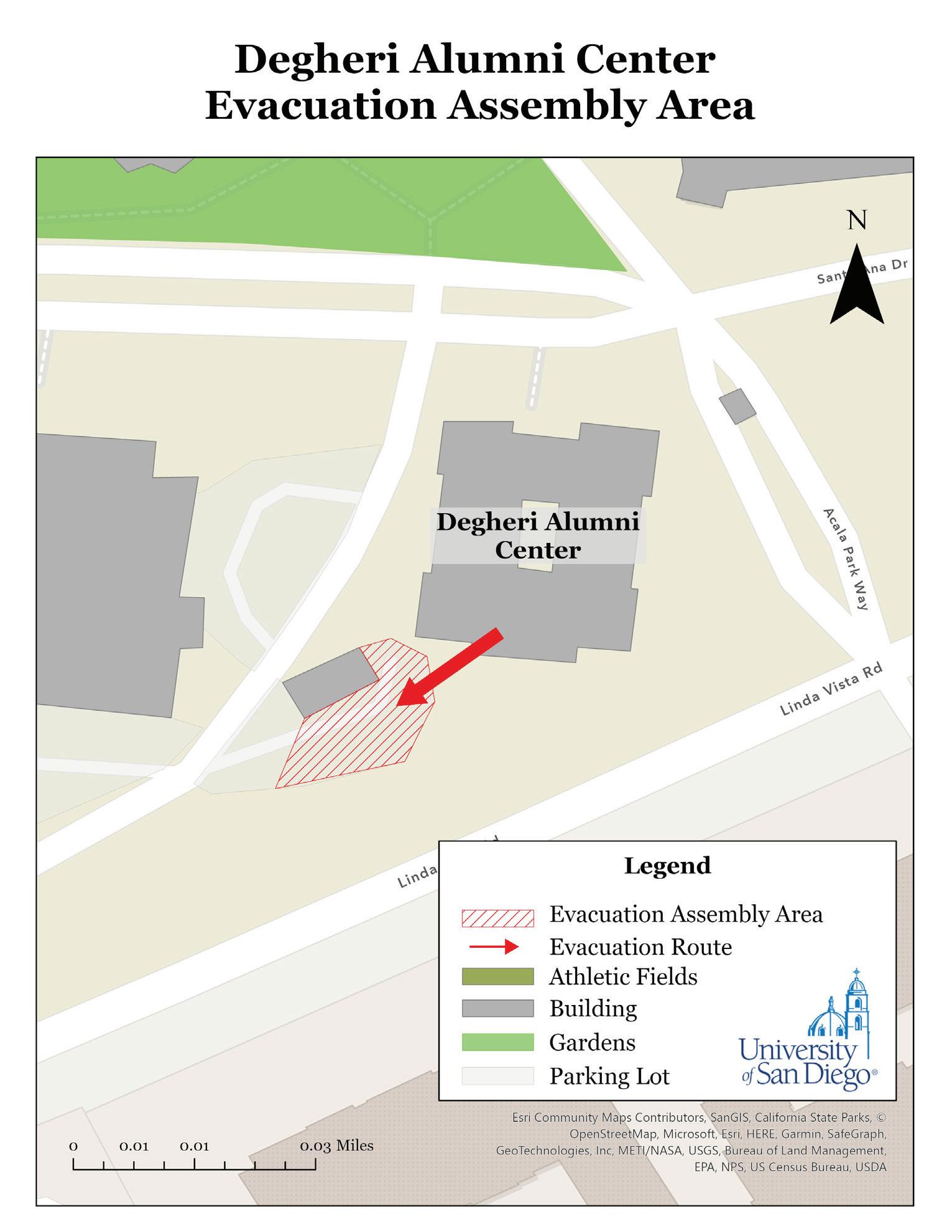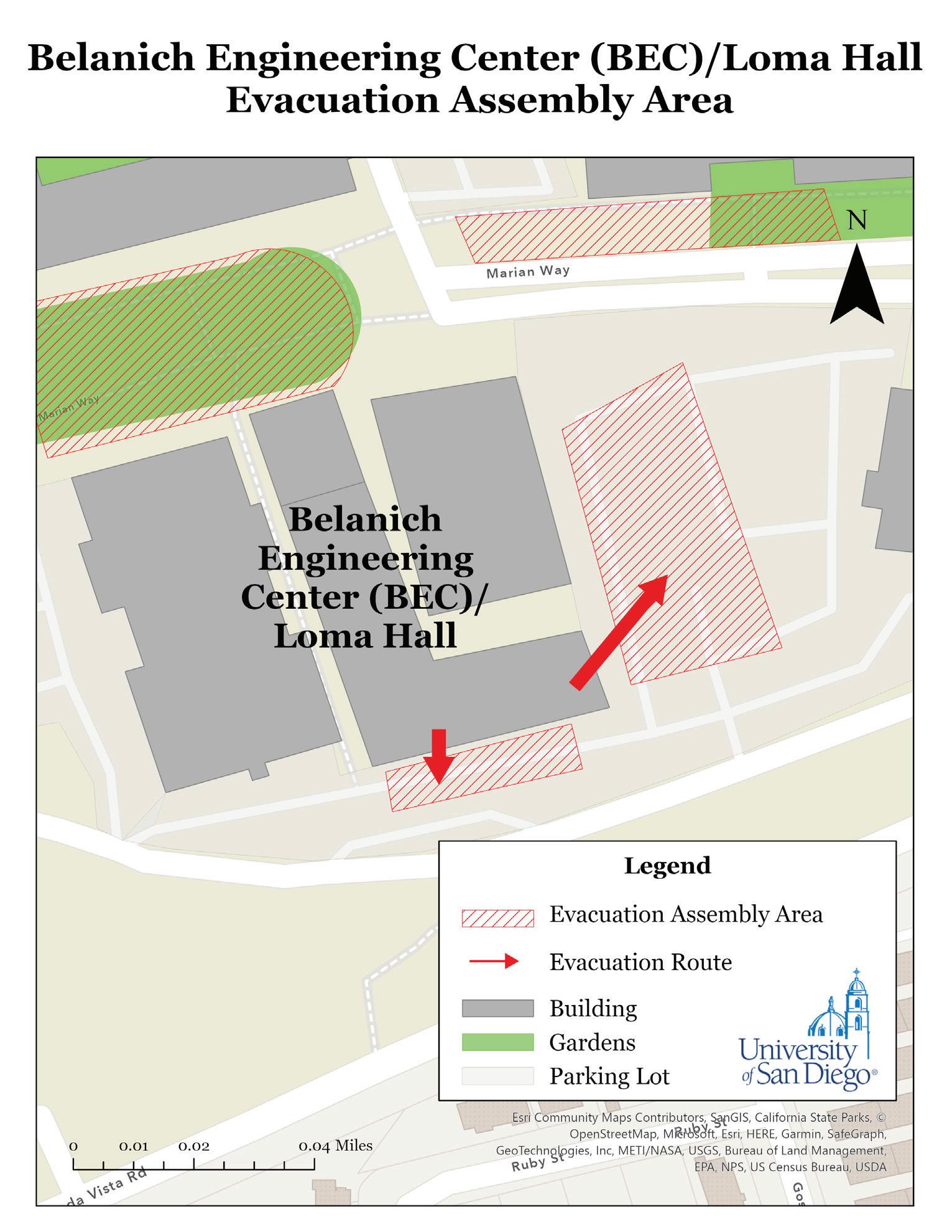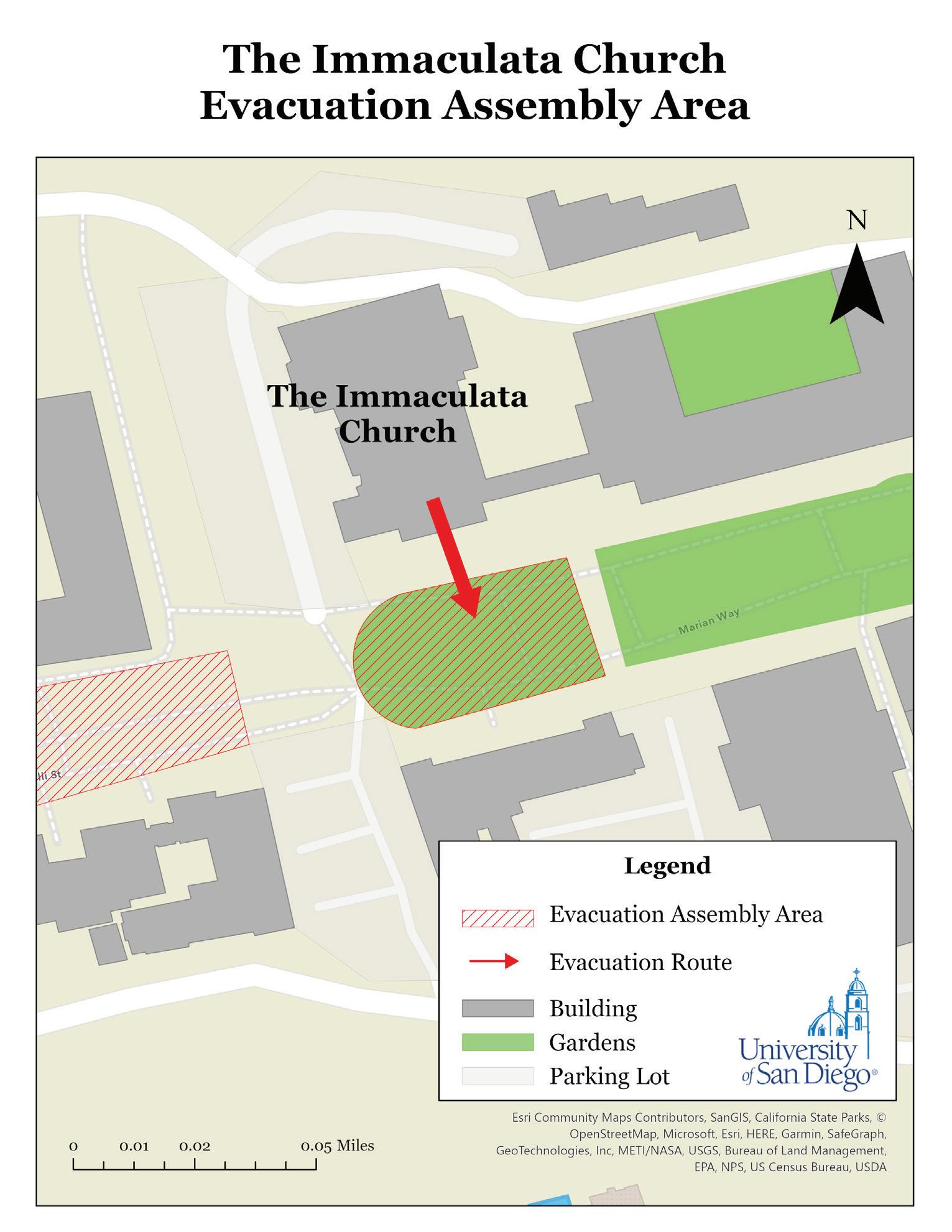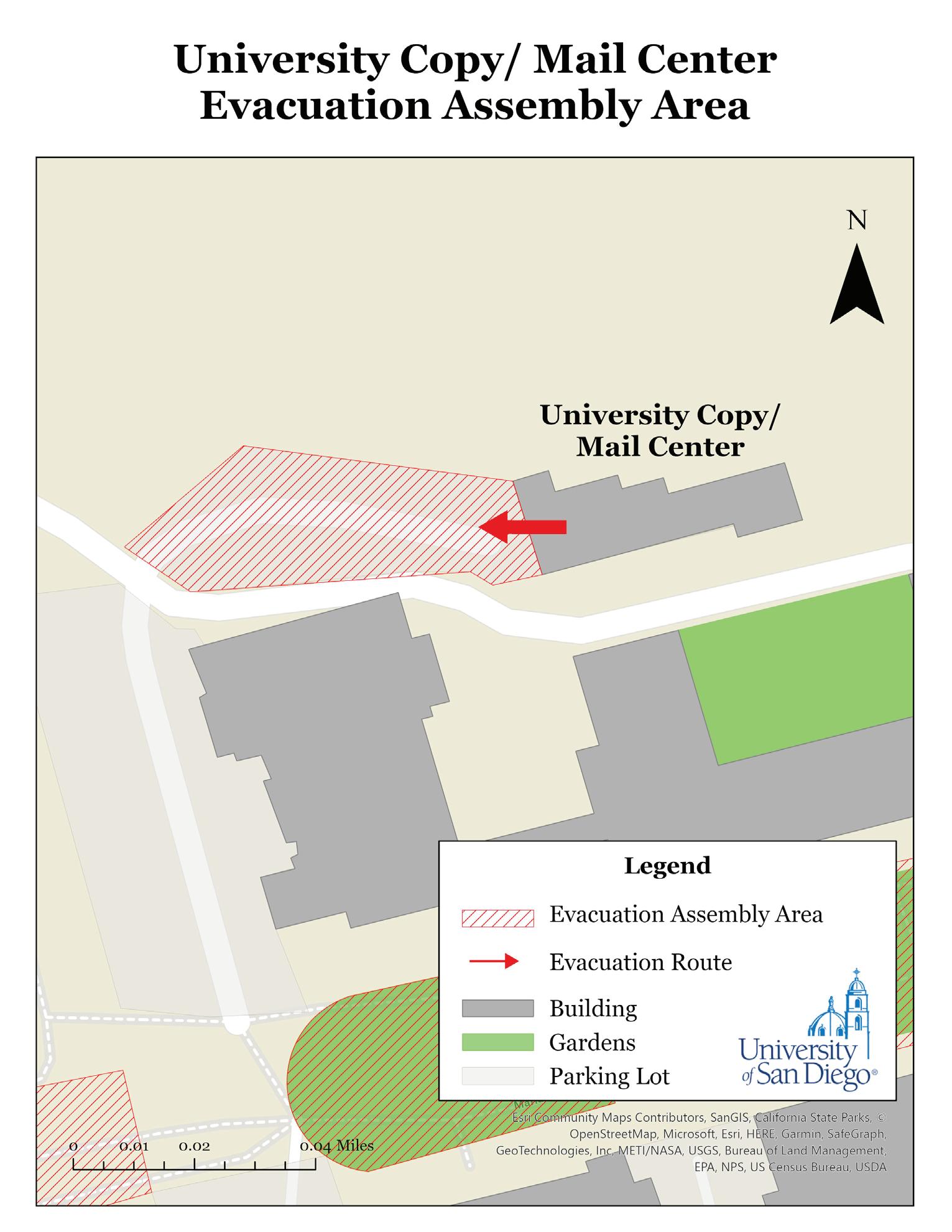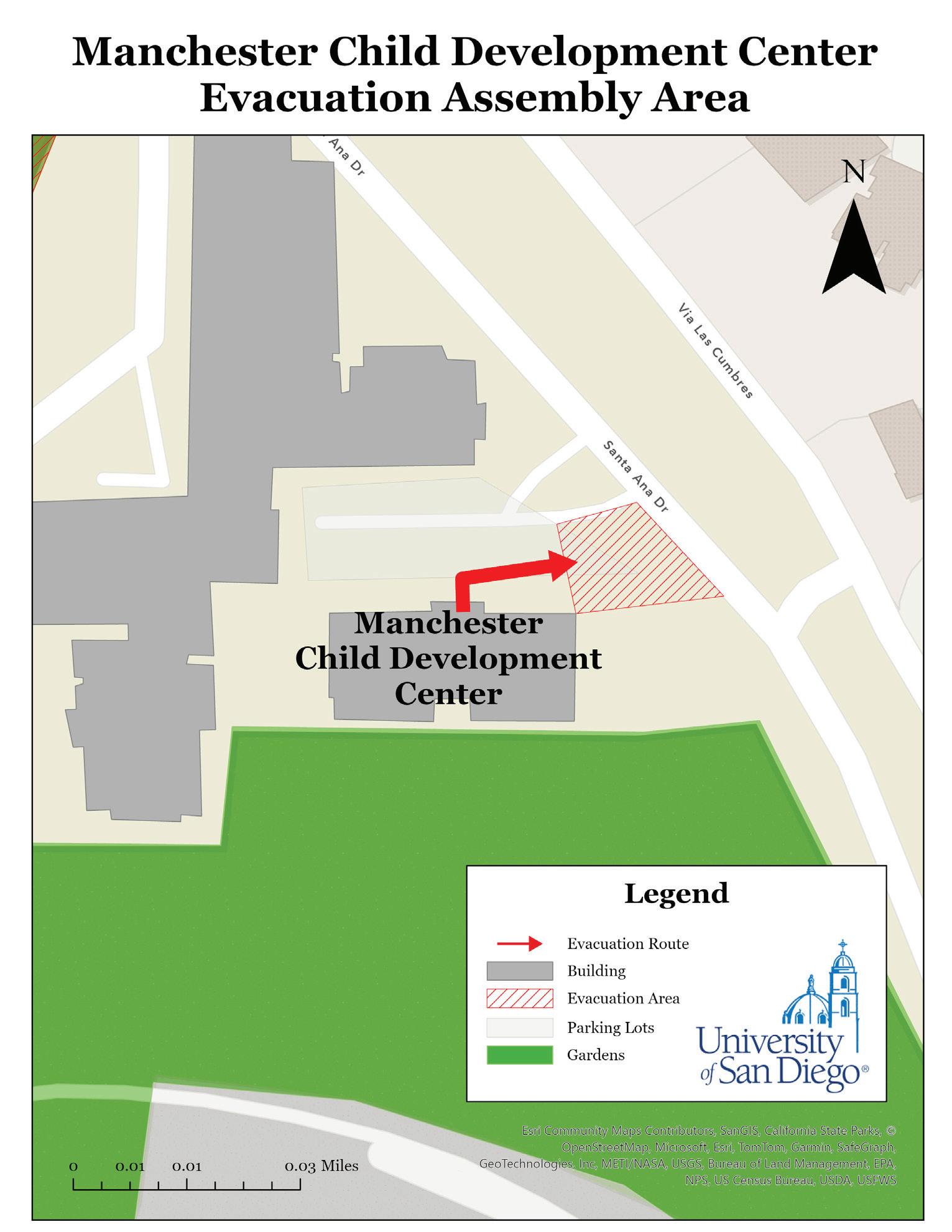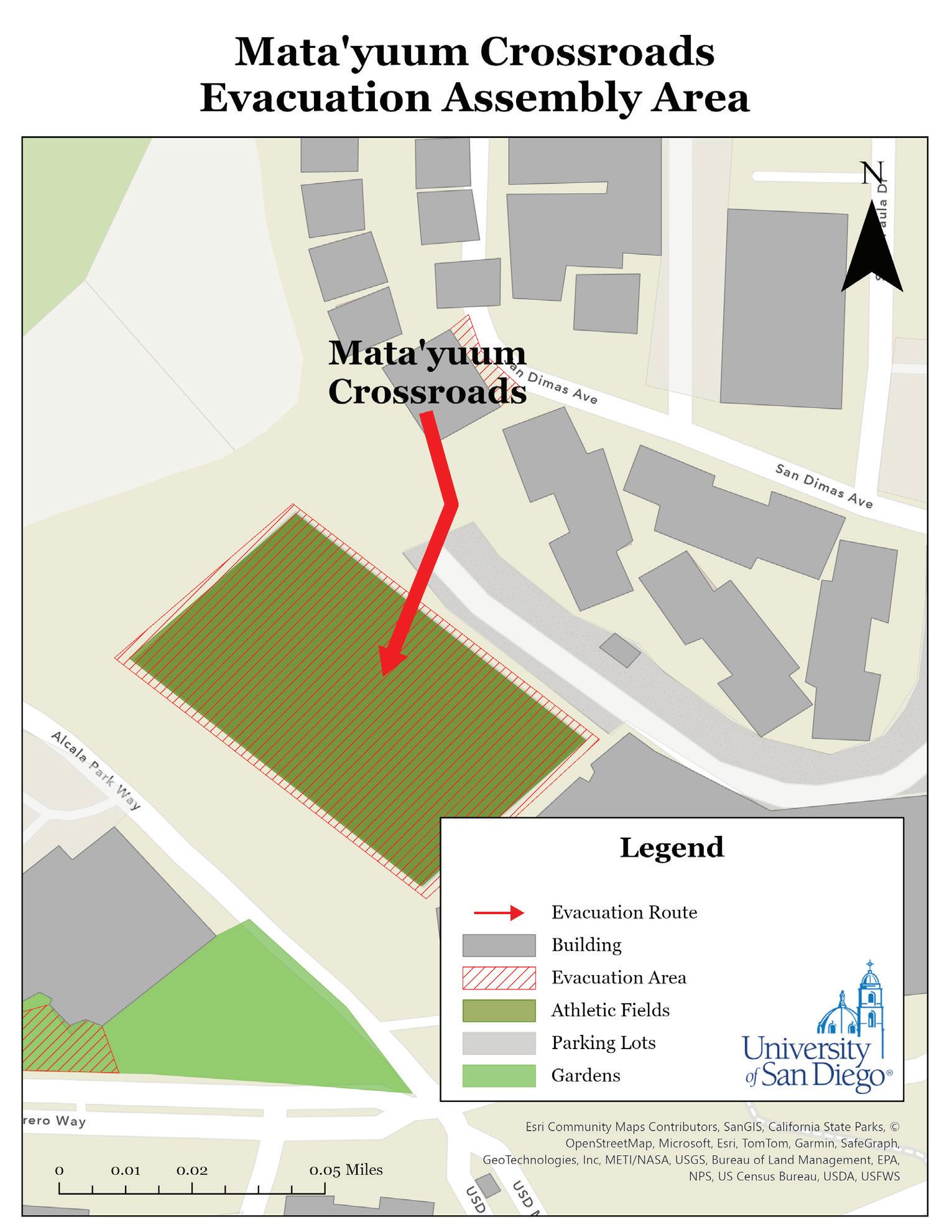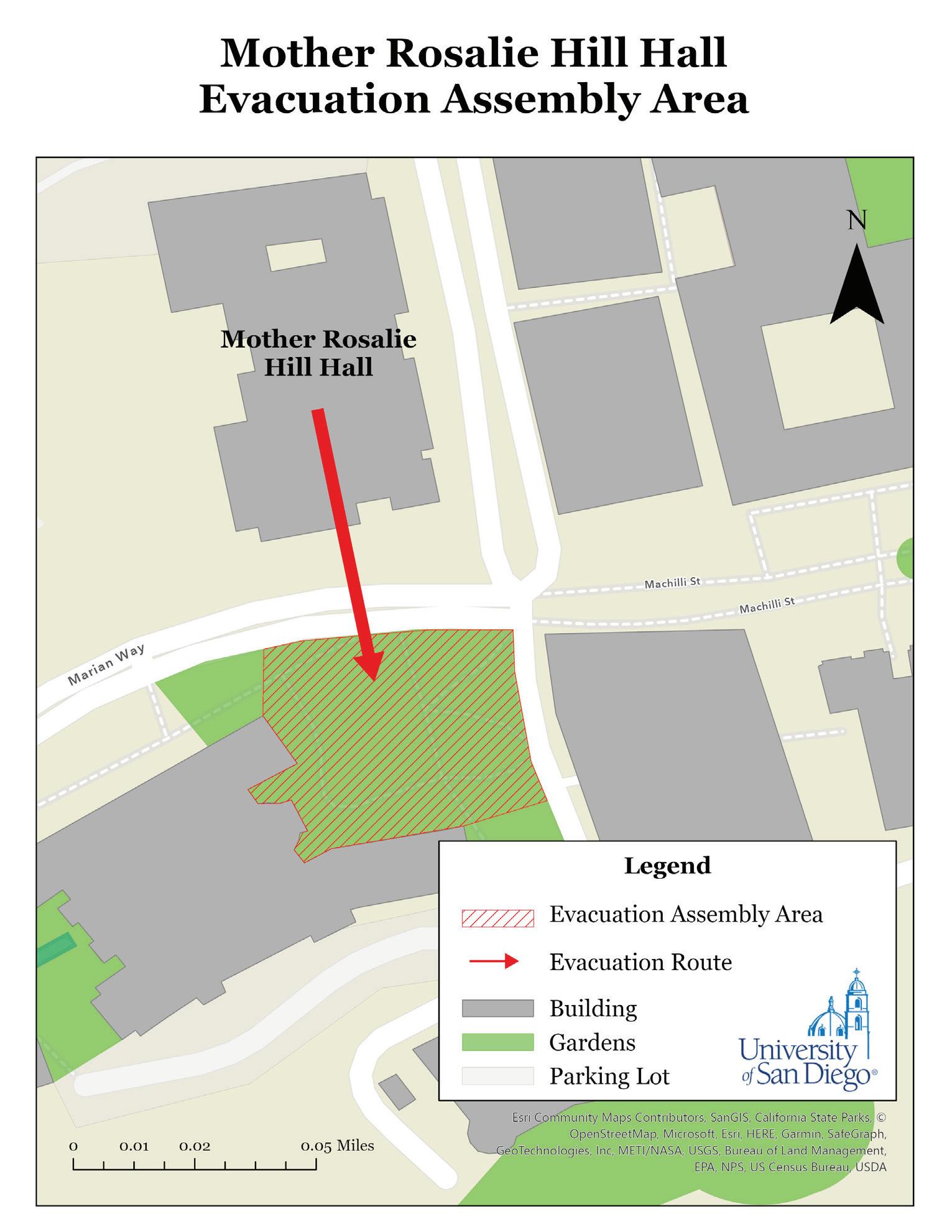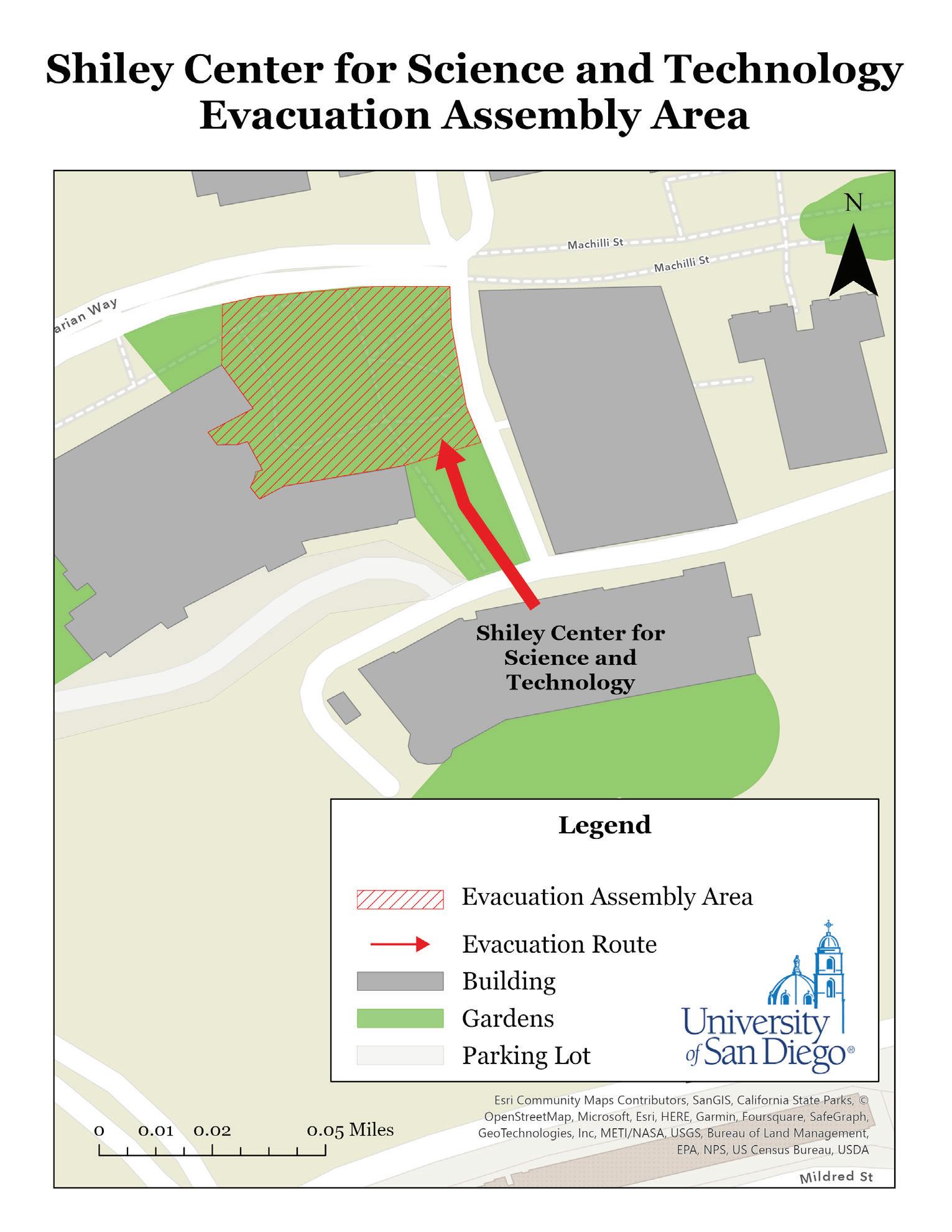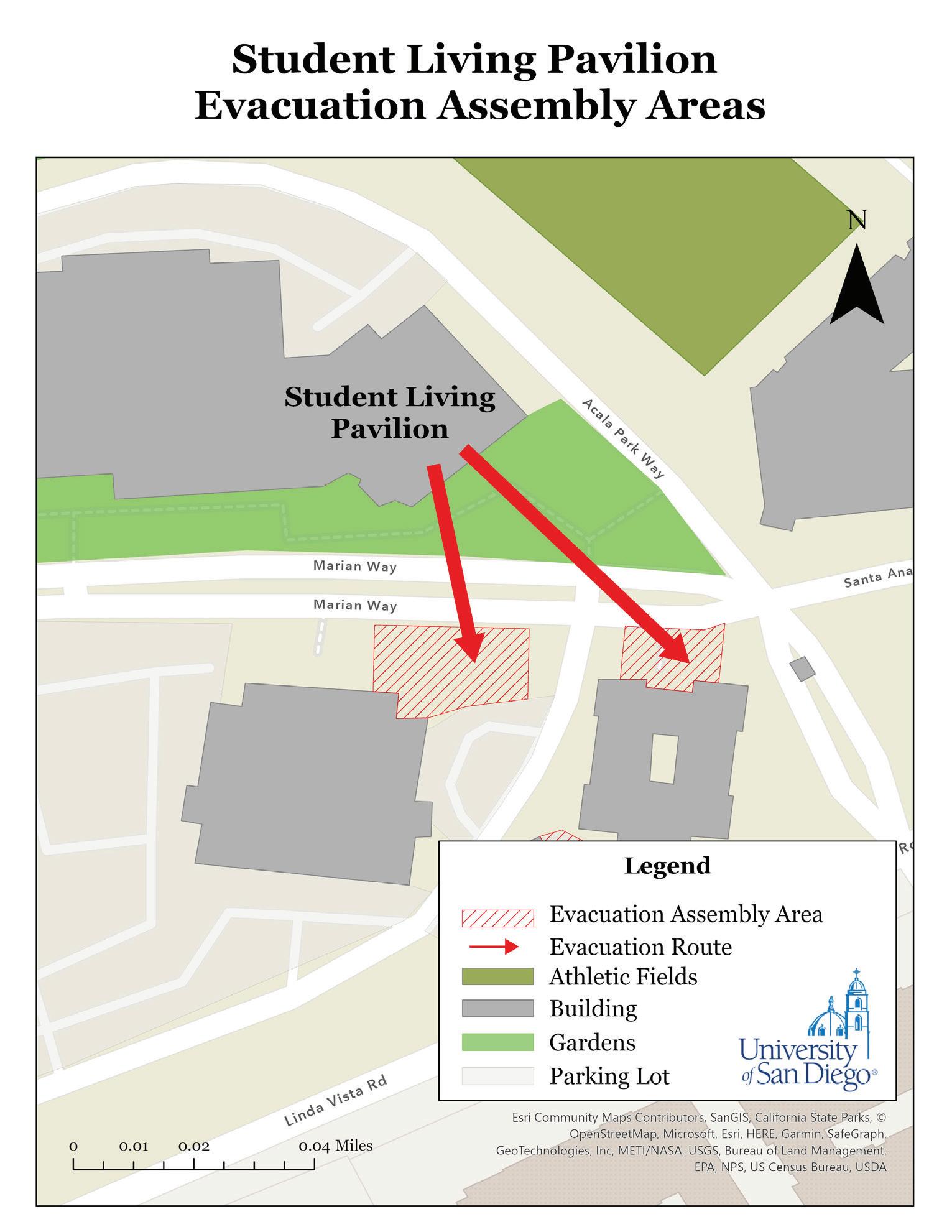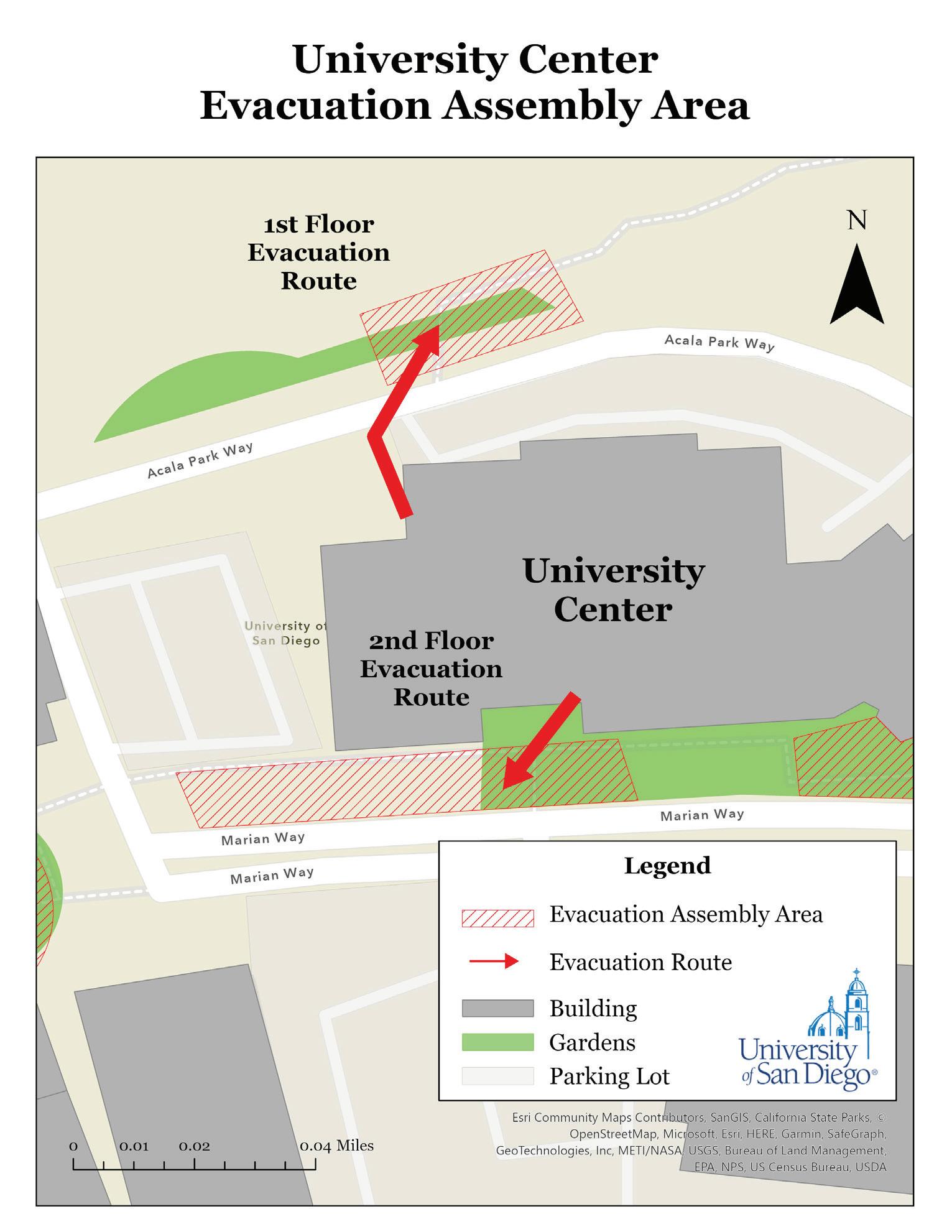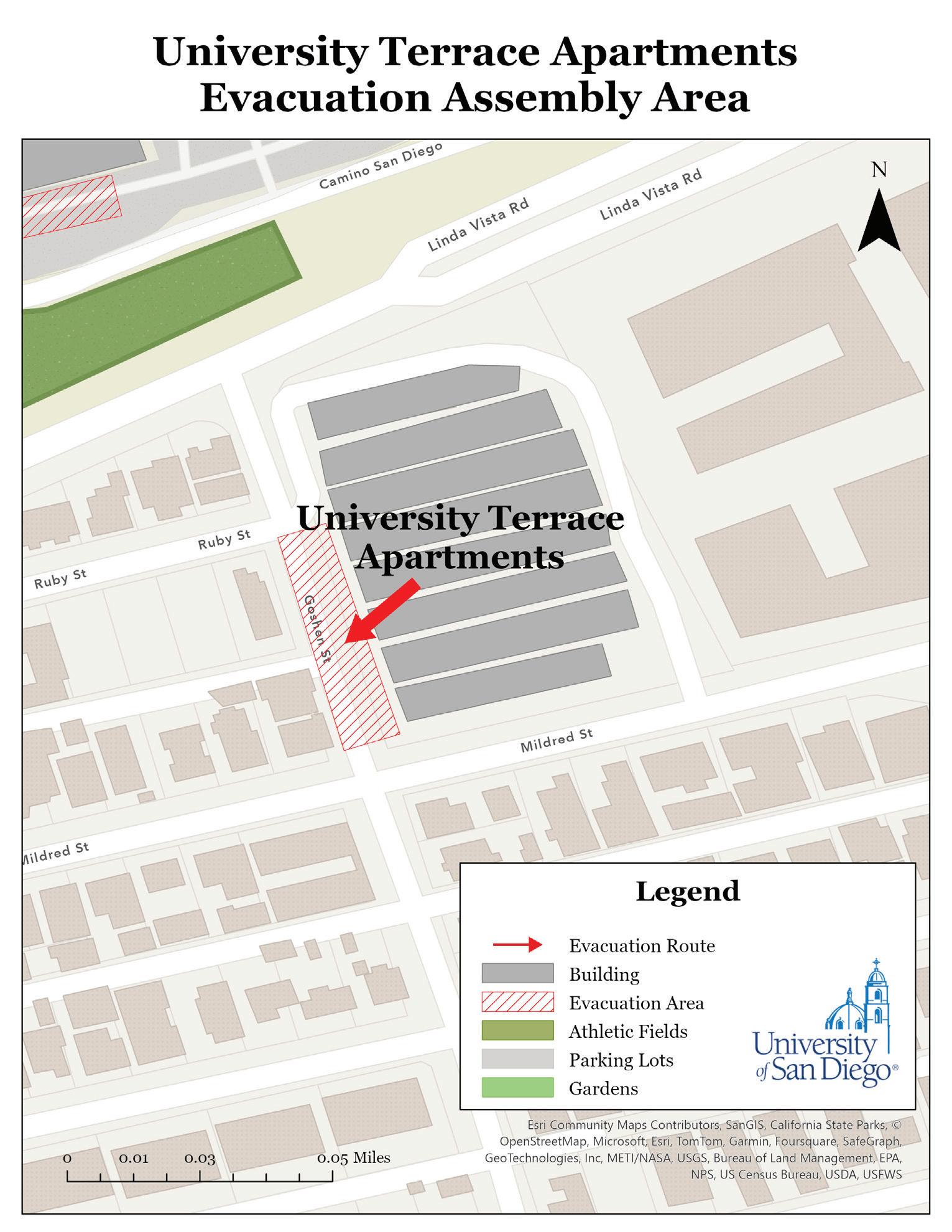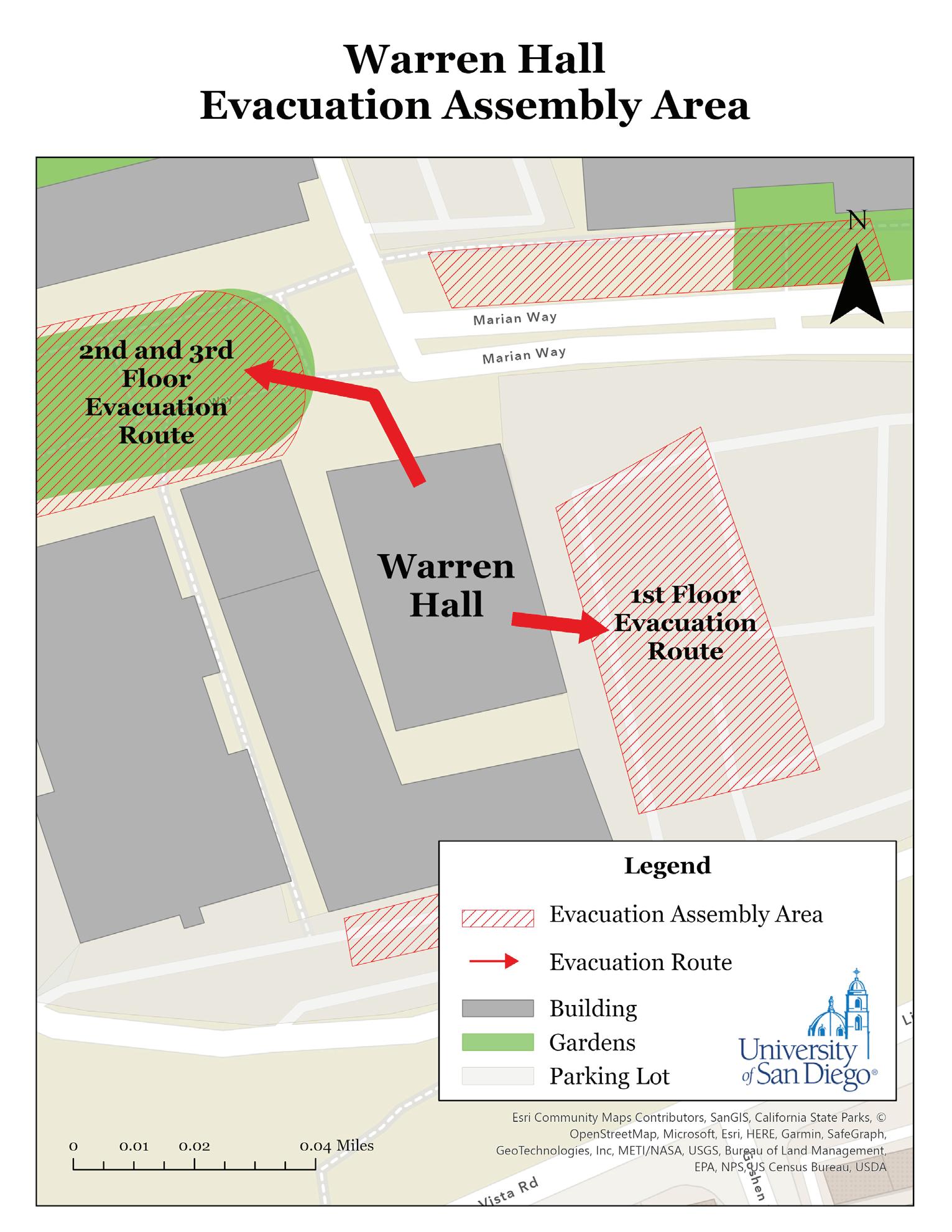Evacuation Assembly Area Maps
Created by Emily Jenkins, DPS Graduate Assistant Assisted by Arthur Cummins
DEDICATION
Compiled by Emily Jenkins, Department of Public Safety
Graduate Assistant, anticipated Master of Environmental and Ocean Sciences, 2024.
On behalf of Chief James Miyashiro, USD Department of Public Safety.
In support of USD faculty and staff awareness and knowledge of emergency preparedness protocol regarding safe evacuation from university facilities.
Additional support provided by Dr. Arthur Cummins, the USD Department of Public Safety, Keith Macdonald, and Dr. Zhi-Yong Yin. Thank you for your encouragement and for giving me ample opportunities to learn.
Benefits of contribution include assistance to staff and faculty members in preparing and understanding emergency protocol, exploring the power of mapping in public safety on a university campus and supporting my growth as a graduate student. From this position, I gained the skills that ultimately lead to earning a professional position in GIS and mapping in the consulting sector.
UNIVERSITY OF SAN DIEGO
Fall and Spring Semesters
2023-2024
INTRODUCTION TO EVACUATION PROCEDURES
BE PREPARED
Know the exit routes from your office, floor, and building. Review the EMERGENCY EVACUATION PLANS that are posted inside the main entrances, stairways and by elevators in your building. Know the location of the nearest exit and an alternate one in case one is blocked. Also know the location of the designated Evacuation Assembly Area, the location of fire extinguishers and fire alarm pull stations for your building. Learn how to use a fire extinguisher before a fire. To arrange for hands-on fire extinguisher training, call the Environmental Health and Safety Office at ext. 2595.
In the event of an emergency, faculty members, residence life personnel and supervisors have the responsibility to give instructions to students and staff; close and lock doors; and provide other safety and first aid measures unless otherwise directed by the Public Safety Department or other emergency personnel.
IF A BUILDING MUST BE EVACUATED:
1. Fire alarms or verbal notice will be used to sound the evacuation.
2. Call USD Public Safety at ext. 2222 from a safe location.
3. Remain calm. Walk quickly, but do not run.
4. Exit via stairway, DO NOT USE ELEVATORS.
5. Follow instructions of the building, floor safety representatives and Public Safety Department or other emergency personnel.
6. Seek out and give assistance, as needed, to any disabled persons in the area.
7. If time permits, turn off the power to all electrical equipment and close doors.
8. Go to the designated Evacuation Assembly Area for your building. These are located outside away from the building.
9. Keep roadways and walkways clear for emergency vehicles.
10. WAIT FOR INSTRUCTIONS from emergency personnel. DO NOT RE-ENTER THE BUILDING until instructed to do so by the Public Safety Department or other emergency personnel.
FACULTY/STAFF/COMMUTER STUDENTS
Whenever there is a non-residential building evacuation, leave the building quickly, but in an orderly manner to the initial staging and triage area that is the predetermined Evacuation Assembly Area as listed on the Building Evacuation Assembly Areas.
Wait for further instructions from Public Safety, emergency personnel, or the building safety representative(s).
In cases where the incident expands and the campus needs to be evacuated immediately, Public Safety will activate the mass notification system to notify faculty members, staff and commuter students to seek shelter off campus. Those faculty members, staff and/or commuter students that do not have immediate transportation off campus and are unable to carpool with other community members, should go to the nearest unaffected resident hall staging area for transportation assistance.
EVACUATION OF DISABLED PERSONS
Visually Impaired Persons
In the event of an emergency, tell the person the nature of the emergency and offer to guide them to the nearest emergency exit. Have the person take your elbow to escort them.
Hearing Impaired Persons
Two methods of warning are:
1. Writing a note, telling what the emergency is and the nearest evacuation route. For example: “FIRE-go out the rear door to the right and down- NOW!”
2. Turn the light switch on and off to gain attention and then indicate with gestures what is happening and what to do.
PERSONS USING CRUTCHES, CANES, OR WALKERS
Carrying options include using a two-person lock arm position or having the person sit on a sturdy chair, preferably one with arms. If time permits, call Public Safety at ext. 2222 or (619) 260-2222 for carrying chair.
NON-AMBULATORY PERSONS (PERSONS IN WHEELCHAIRS)
There are many considerations when moving a person in a wheelchair. Wheelchairs have movable parts; some are not designed to withstand the stress of lifting. You may have to remove the chair batteries. Life support equipment may be attached. Lifting a person with minimal ability to move may be dangerous to their well-being.
Always consult with the person in the chair regarding:
· The number of people necessary for assistance.
· Ways of being removed from the wheelchair.
· Whether a seat cushion or pad should be brought along with him/her, if they are removed from the chair.
· Whether to extend or bend extremities when lifting because of pain, catheter, spasticity, braces, etc.
· Being carried forward or backward on a flight of stairs.
· The type of assistance necessary after evacuation.
Proper Lifting Techniques
1. Correct Position
· One foot a little ahead of the other.
· Toes pointed slightly outward.
· Feet about shoulder width apart.
2. Squat
3. Lift yourself and load with your legs.
4. KEEP YOUR BACK STRAIGHT.
University of San Diego
Evacuation Assembly Areas


